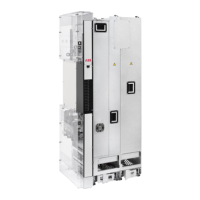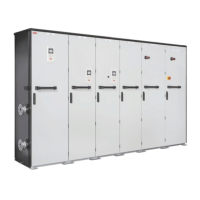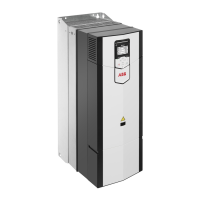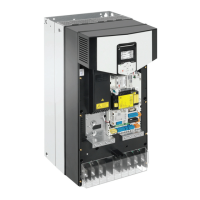Use as motor cablingUse as input power cablingCable type
YesYes
Symmetrical shielded (or armored)
cable with three phase conductors
and a shield (or armor), and separ-
ate PE conductor/cable
1)
1)
A separate PE conductor is required if the conductivity of the shield (or armor) is not sufficient for the PE use.
Alternate power cable types
Use as motor cablingUse as input power cablingCable type
Yes with phase conductor smaller
than 10 mm
2
(8 AWG) Cu, or motors
up to 30 kW (40 hp).
Yes with phase conductor smaller
than 10 mm
2
(8 AWG) Cu.
Note: Shielded or armored cable, or
cabling in metal conduit is always
recommended to minimize radio fre-
quency interference.
Four-conductor cabling in PVC con-
duit or jacket (three phase conduct-
ors and PE)
Yes with phase conductor smaller
than 10 mm
2
(8 AWG) Cu, or motors
up to 30 kW (40 hp)
Yes
Four-conductor cabling in metal
conduit (three phase conductors and
PE), eg, EMT, or four-conductor ar-
mored cable
Yes with motors up to 100 kW
(135 hp). A potential equalization
between the frames of motor and
driven equipment is required.
Yes
Well-shielded (Al/Cu shield or ar-
mor) four-conductor cable (three
phase conductors and a PE)
NoYes
WARNING!
If you use unshielded
single-core cables in an IT
network, make sure that the
non-conductive outer
sheath (jacket) of the cables
have good contact with a
properly grounded conduct-
ive surface. For example,
install the cables on a prop-
erly grounded cable tray.
Otherwise voltage may be-
come present on the non-
conductive outer sheath of
the cables, and there is
even a risk of an electric
shock.
A single-core cable system: three
phase conductors and PE conductor
on cable tray
Preferable cable arrangement to
avoid voltage or current unbalance
between the phases
Guidelines for planning the electrical installation 79
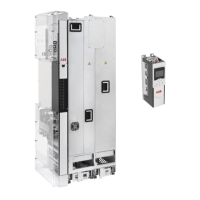
